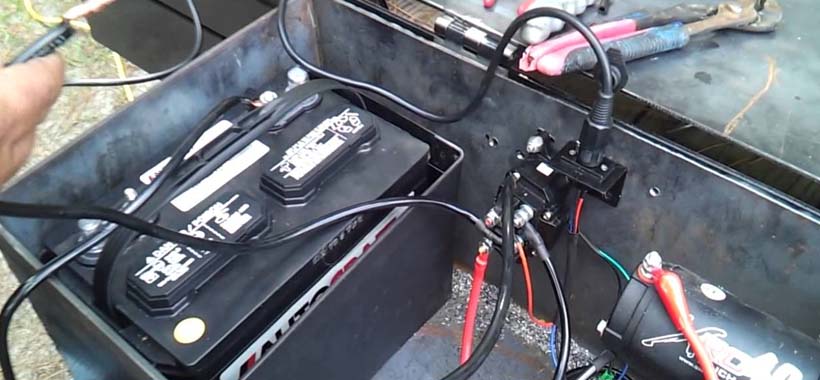Winching, however simple it may look demands good automobile knowledge. The battery demands of pulling another car pay a toll in your car battery. Ultimately battery use determines its longevity. It’s essential to achieve effective winching while at the same time preserving your battery life.
When it comes to the best battery for running a winch, big is good (if it fits on your rig); however, other parameters play a crucial role in your winching output. Minute Reserve capacity (MRC) is one such variable.
This is the amount of time a battery with a current of 25Amperes sustains a designated constant load at 80 degrees Farenheight.
Granted truck batteries are 12 volts, and this time offers a dropping of voltage to 10.2 volts. Naturally, it is the alternator that juices up your battery hence letting you winch longer. With the engine off, your typical car battery could flat out in anything between 1 and 2 minutes depending on its health and capacity.
Winches draw high current from the battery. That is why the modus operandi when winching is to keep your car on high RPM so that the alternator recharges the battery all through.
As earlier stated MRC is based on a temperature of 80F.So what do you consider during freezing weather or cold climatic areas? Use another parameter! Reserve capacity in cold regions is measured by Cold Cranking Amperes (CCA) that a fully charged battery can deliver for 30 seconds while maintaining a voltage above 7.2 volts and at 0F.
PS. The power the winch consumes will also depend on the weight you are pulling
So how do you calculate the duration of your battery? Several factors come into play, time(T), reserve capacity and (R).
Time Duration of Pull = (A/W) x T
Where:
- A = Reserve capacity amperage rating of the winching battery (typically this is 25 amps)
- W = Winch amp draw at rated pull
- T = Reserve capacity time (in minutes) of your battery
The amp draw from the winch varies depending on the size of the winch and how much weight you are pulling. For instance, a small boat trailer winch towing a light boat will draw less current than a heavy-duty Jeep Wrangler winch trying to tug free a stuck 4X4.
Your main battery must be at optimal power to crank up the engine in case you are winching with the engine off. Therefore, ensuring your battery voltage doesn’t fall below this 10.2 threshold is a priority. Pulling another load comes with its complexity of extraneous factors like drag and slipping that demand a longer duration. A good winch should offer longer sustained pull before the winch falls off or the battery dies.
Check this out: Top 5 Best ATV Winches on the Market

Running a Winch Without Turning on the Car
If you want to use your winch without turning on your truck, you can get off with this venture if:
- Using a deep cycle high capacity stand alone battery for winch
- Using a battery charger to run a winch. This is appropriate if you have access to mains electricity
- Get a smaller winch that doesn’t draw so much current
It is important to note that car winches were not designed to pull for more than 10 minutes (if you factor in the battery voltage). All these factors are constant if you have a good alternator which effectively charges the battery and powers the engine. The amount of time the battery can last while winching is also affected by the battery condition. Cells with low voltage have a high likelihood of not sustaining a long pull due to the low MRC.
Check this too: Best Synthetic Winch Rope
